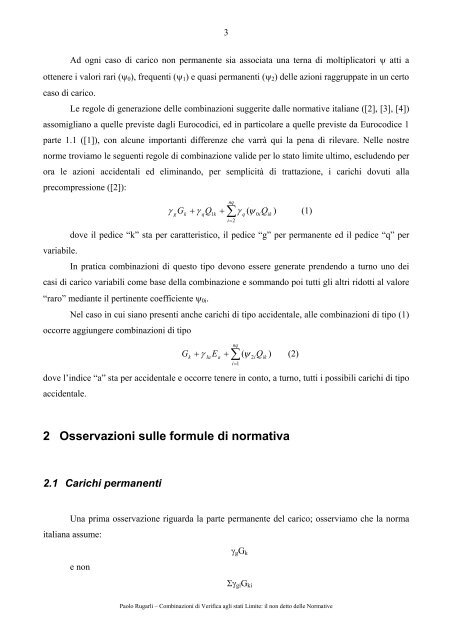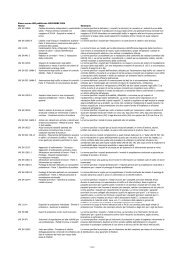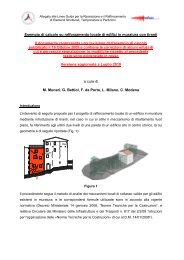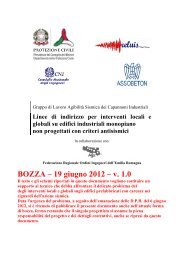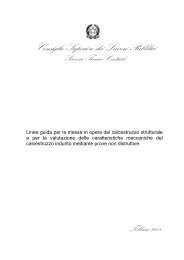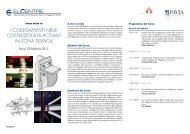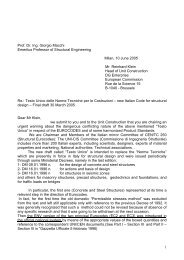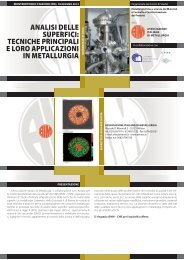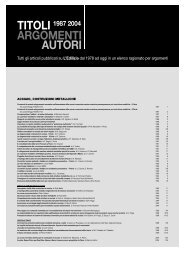Combinazioni di Verifica agli stati Limite: il non ... - Steelchecks.com
Combinazioni di Verifica agli stati Limite: il non ... - Steelchecks.com
Combinazioni di Verifica agli stati Limite: il non ... - Steelchecks.com
You also want an ePaper? Increase the reach of your titles
YUMPU automatically turns print PDFs into web optimized ePapers that Google loves.
3<br />
Ad ogni caso <strong>di</strong> carico <strong>non</strong> permanente sia associata una terna <strong>di</strong> moltiplicatori ψ atti a<br />
ottenere i valori rari (ψ 0 ), frequenti (ψ 1 ) e quasi permanenti (ψ 2 ) delle azioni raggruppate in un certo<br />
caso <strong>di</strong> carico.<br />
Le regole <strong>di</strong> generazione delle <strong>com</strong>binazioni suggerite dalle normative italiane ([2], [3], [4])<br />
assomigliano a quelle previste d<strong>agli</strong> Euroco<strong>di</strong>ci, ed in particolare a quelle previste da Euroco<strong>di</strong>ce 1<br />
parte 1.1 ([1]), con alcune importanti <strong>di</strong>fferenze che varrà qui la pena <strong>di</strong> r<strong>il</strong>evare. Nelle nostre<br />
norme troviamo le seguenti regole <strong>di</strong> <strong>com</strong>binazione valide per lo stato limite ultimo, escludendo per<br />
ora le azioni accidentali ed eliminando, per semplicità <strong>di</strong> trattazione, i carichi dovuti alla<br />
pre<strong>com</strong>pressione ([2]):<br />
nq<br />
1 k<br />
+ ∑γ<br />
q<br />
(ψ<br />
0iQik<br />
)<br />
i=<br />
2<br />
γ G + γ Q<br />
(1)<br />
g<br />
k<br />
q<br />
dove <strong>il</strong> pe<strong>di</strong>ce “k” sta per caratteristico, <strong>il</strong> pe<strong>di</strong>ce “g” per permanente ed <strong>il</strong> pe<strong>di</strong>ce “q” per<br />
variab<strong>il</strong>e.<br />
In pratica <strong>com</strong>binazioni <strong>di</strong> questo tipo devono essere generate prendendo a turno uno dei<br />
casi <strong>di</strong> carico variab<strong>il</strong>i <strong>com</strong>e base della <strong>com</strong>binazione e sommando poi tutti gli altri ridotti al valore<br />
“raro” me<strong>di</strong>ante <strong>il</strong> pertinente coefficiente ψ 0i .<br />
Nel caso in cui siano presenti anche carichi <strong>di</strong> tipo accidentale, alle <strong>com</strong>binazioni <strong>di</strong> tipo (1)<br />
occorre aggiungere <strong>com</strong>binazioni <strong>di</strong> tipo<br />
G<br />
k<br />
nq<br />
∑<br />
+ γ E + (ψ 2<br />
Q ) (2)<br />
Ia<br />
a<br />
dove l’in<strong>di</strong>ce “a” sta per accidentale e occorre tenere in conto, a turno, tutti i possib<strong>il</strong>i carichi <strong>di</strong> tipo<br />
accidentale.<br />
i=<br />
1<br />
i<br />
ik<br />
2 Osservazioni sulle formule <strong>di</strong> normativa<br />
2.1 Carichi permanenti<br />
Una prima osservazione riguarda la parte permanente del carico; osserviamo che la norma<br />
italiana assume:<br />
e <strong>non</strong><br />
γ g G k<br />
Σγ gi G ki<br />
Paolo Rugarli – <strong>Combinazioni</strong> <strong>di</strong> <strong>Verifica</strong> <strong>agli</strong> <strong>stati</strong> <strong>Limite</strong>: <strong>il</strong> <strong>non</strong> detto delle Normative


